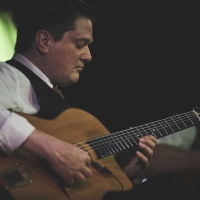DjangoBooks.com
Welcome to our Community!
Categories
- 20K All Categories
- 1.1K General
- 476 Welcome
- 59 Archtop Eddy's Corner
- 146 CD, DVD, and Concert Reviews
- 385 FAQ
- 26 Gypsy Jazz Italia
- 27 Photos
- 202 Gypsy Picking
- 21 Unaccompanied Django
- 15 Pearl Django Play-Along Vol.1
- 17 Gypsy Fire
- 45 Gypsy Rhythm
- 1.4K Gypsy Jazz University - Get Educated
- 131 Gypsy Jazz 101
- 227 Repertoire
- 218 History
- 708 Technique
- 51 Licks and Patterns
- 6 Daniel Givone Manouche Guitare Method Users Group
- 20 Eddie Lang Club
- 1.3K Gypsy Jazz Gear
- 802 Guitars, Strings, Picks, Amps, Pickups and Other Accessories
- 459 Classifieds
- 49 Recording
- 62 Other Instruments
- 18 Violin
- 5 Mandolin
- 22 Accordion
- 7 Bass
- 10 Woodwinds
- 347 Gypsy Jazz Events
- 143 North America
- 109 Europe
- 95 International
In this Discussion
Musette guitar accompagnement the right way
 DoubleWhisky
Upper FranconiaNew Vit Cach, Dupont MD60, 1940s Castelluccia
DoubleWhisky
Upper FranconiaNew Vit Cach, Dupont MD60, 1940s Castelluccia
Hello,
I want to learn how to play tasteful rhythm guitar for accordion based musette valses. I'm thinking of rhythm in the style of the accompagnement for the old recordings of f.e. Gus Viseur, Tony Murena or Jo Privat.
I know that there are plenty of sheets with the rhythm chords written on them and I'm able to play rhythm that fits and is ok. But when I listen to f.e. how the Ferret brothers did it on those old recordings their chosen voicings are much more coherent and there is much voice leading happening through slash chords or bass lines.
I'm ok at transcribing solos but I struggle listening out small details and exact voicings/chords from those old recordings. Two things to consider: I can't read music (tabs work of course)and I don't know french. I saw at the djangobooks store that there are books like this one: https://www.djangobooks.com/Item/astuces-de-la-guitare-manouche-vol-3 but I guess the tabs refer to the solos. As described above, chord sheets with only the respective chords are of no use to me, I would need the exact notes that happen in the rhythm, note by note in tablature form. Or videos/tutorials where I can see what's happening on the fretboard.
Are there resources where I can learn that style from or do you have other tips for me?
P.S.: I uploaded an little impression of how I play musette rhythm at the moment when I play the voicings I know on a chord sheet for Swing Valse: https://www.youtube.com/watch?v=LpErCDKZTqI It works and I guess it's ok but I want more than that haha










Comments
There's a few rhythm courses at DC Music School. The ones by Nousche Rosenberg, Hono Winterstein, and Denis Chang include transcriptions with voicings.
DC Music School offers a free course by Benji Wintestein, too, that one doesn't include any transcriptions but you get a good look at his technique.
None of the courses focus on musette but they include sections on waltz and other rhythms.
I have that Astuces Vol 3 book by Christophe Astolfi and I was at DiJ when he taught it in 2017. For each song, the book has a tab for the melody (thème). It has a grille with the basic chord harmony arrangement. It also has a tabbed out rhythm part (rhythmique) that I think is more of what you are looking for. If you watch this Soundslice from Christophe, the rhythm in the A sections is similar to the style in the book, although the book might have a few more single note connecting lines in some of the measures instead of just bass-chord-chord. That might be a triplet on beat three or a pattern such as note-chord-note|note-chord-chord, etc. I think Christophe started a Patreon account where he transcribed more waltzes on Soundslice, but I don't know that he is adding to it. He is sort of the authority on playing in this style and does give private lessons should you choose to go down that route. That is about the best you could do if you are striving for direct tuition. (https://christopheastolfi.com/)
As far as other courses I've seen, Tcha does show a waltz rhythm for Tu Djaial on his Romane Gilia Vol 1 course on DC Music School. I think it is the only waltz but the other songs are great such as Me Hum Matto, Tschawo, etc and the course is only ~$30. He has separate videos for chord rhythm, melody performance and etudes for some of the songs. They are also all transcribed.
Finally, I also know that Yaakov Hoter has a few courses based on musette waltzes. One is also Tu Djaial, but I don't see it currently available. He also has one for Django's Gin-Gin (linked below). In both courses, he has a section on the Bass & Chords accompaniment that should help you find some of the typical moves to help you convert your chord grille to the arrangement you are looking for. He also briefly covers the use of inversions to get this effect in this video, cued to a section where he plays over Montaigne St. Genevieve.
@juanderer Thank you for the tip, I have got two episodes of the Hono Winterstein lessons but that's not exactly what i'm looking for
@billyshakes Thank you for those suggestions and the insight on the book content! Those look promising, I'll dig into it.
What Bill said, Christophe's stuff is exactly what you want.
Bits and pieces during the Django in June class in 2017. Sounds like Ric Molina recorded at least some of these
Your rhythm playing sounds great. As far as playing chords that move nicely, learn inversions first; 5th and 6th string root, 4 basic flavors. I didn't get a full handle on this stuff yet, but every time somebody was doing that in class at Django in June, majority of the time it was using either familiar voicings or some inversion. I once asked this in the class and William Brunard said yes; could you go about it by laying a moving bass line first and then put chords underneath?
Awesome!! Thank you all for your input here in the thread or via pm! And thank you @Buco for that upload. I definitely have to look more into the Astolfi material and the Romane valses.
Note how he changes from F to E. He hangs out on F for two bars then E. He was saying during the class if you look at the melody that's how it should be played.
Thank you for that info! I have a question regarding the Romane Impair & Valse book: are the rhythm parts there fully tabbed out or are there "only" chord names and the bass movement indicated through slash chords?
Ok thank you, then I will start directly with Astolfi as this his valse rhythm is very much what i am looking for.
Since I don't really see the underlying pattern yet in terms of voicing, flavor selection and bass note selection, I thought I'd start by slowly working out a continuous (admittedly quite predictable) bassline to Jeannette's chords as a first step. I think this should be a good preparation and entry point:
P.S.: sorry for that monstrous reverb, had to play in the garage as my daughter was asleep haha
It sounds good. As Steve Vai said, go for the low hanging fruit.